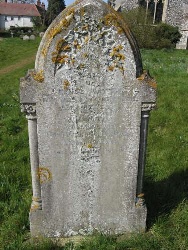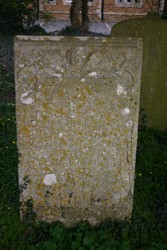How and why grave monuments become illegible
The gravestone photographic resource project is an attempt to provide a record of grave monuments for future generations. This is important because over time many monuments deteriorate and become unreadable.
There are many reasons for this deterioration including:
- wind errosion
- water errosion
- frost damage
- lichen and moss damage
- ivy damage
- plant damage
- mechanical damage
- vandalism
 |
A good example of how grave monuments gradually become less readable over time are these two photos of the same monument but taken years apart: Notice in particular how water/frost damage has lifted off part of the bottom right of the monument. Once this type of damage starts it usually progresses quite quickly until none of the original surface is left and the monument is completely unreadable. This is a major reason why the Gravestone Photographs Resource is so important and why it needs more volunteers! |
 |








